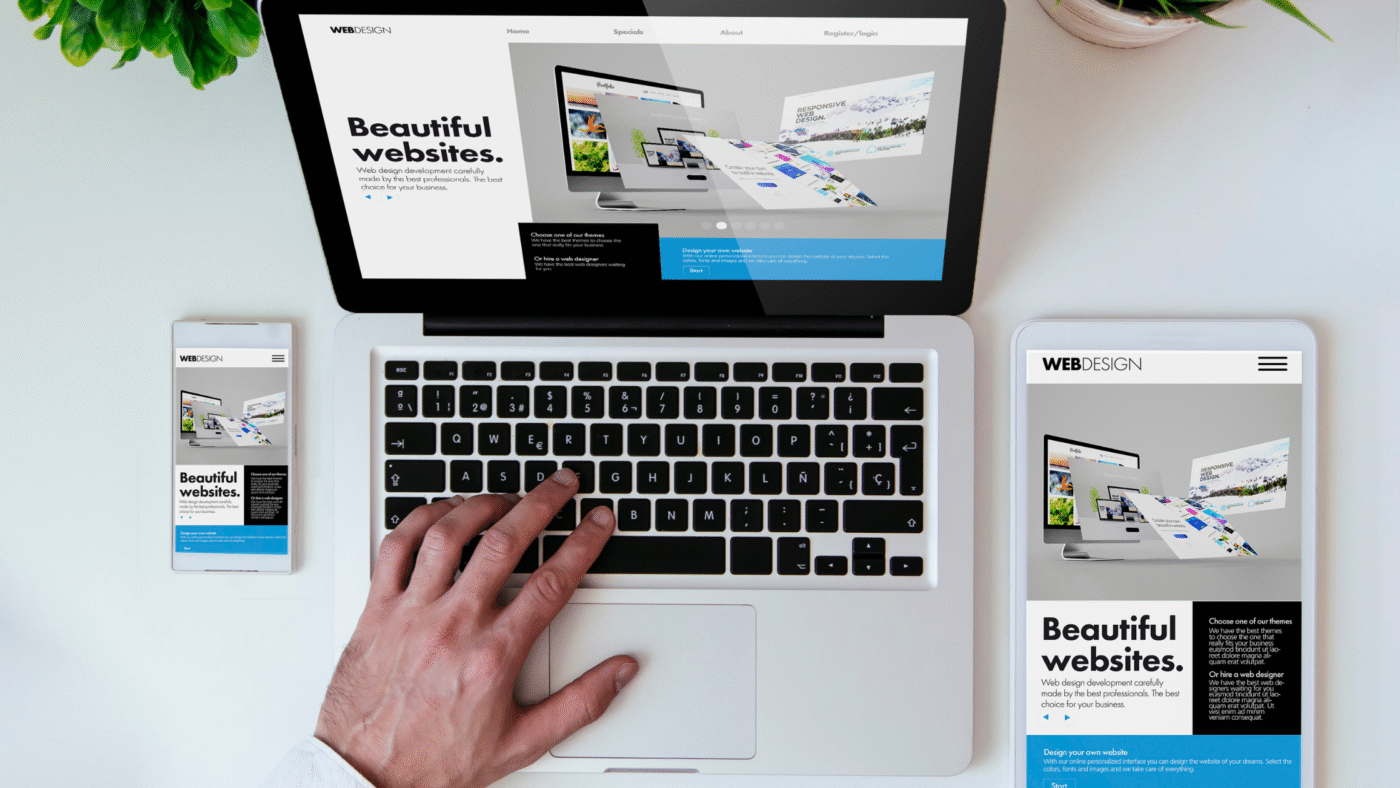Most businesses believe a “good-looking website” is enough. It isn’t. A website without a conversion strategy is nothing more than an online brochure — and brochures don’t grow revenue.
What Is Conversion-Driven Design?
Conversion-driven design is what sets high-performing brands apart from the rest. It’s a web design and content approach that intentionally guides visitors toward taking action — buying, booking, enquiring, subscribing, or calling.
If your website isn’t built for conversions, you’re leaving money on the table every single day.

Conversion-driven design blends smart web development, UX design, SEO, content strategy, and brand marketing
into one goal:
Turn website traffic into qualified leads and paying customers.
For every business, this matters because:
- You can’t outspend big brands.
- You compete on clarity, value, and trust.
- Your website must act as your best salesperson — 24/7.
If your site fails to convert, your competitors win — even if they have worse products.
Why Most Business Websites Fail to Convert?
Uncomfortable truth:
Most Business sites fail for the same reasons — and they’re all fixable.
1. No Clear User Journey
Visitors land on the page and get stuck because nothing shows them what to do next.
There’s no structure, no direction, and no clear path to follow.
2. Weak CTAs
“Submit” or “Know more” won’t drive conversions.
People respond to clarity, not confusion.
3. Poor Content Structure
If your content is too long, too vague, or too outdated, you lose attention instantly.
4. Slow Website Speed
A slow site bleeds conversions. Period.
5. Zero Social Proof
People buy only when they trust you.
Testimonials, reviews, case studies = conversion power.
6. Not Optimized for SEO
If you’re not visible on Google, you don’t exist to your customers.
If even two of these sound familiar, it’s time for a redesign — not visually, but strategically.
The Core Elements of Conversion-Driven Web Design
1. Clear and Intuitive User Journey
Your visitor should know exactly:
- Where they are
- What they can find
- What they should do next
This requires:
- Clean navigation
- Logical page flow
- Consistent storytelling
- Predictable interactions
A confused user never converts.
2. High-Impact Landing Pages
A conversion-focused landing page includes:
- A strong headline that explains your offer
- Benefit-driven content
- Simple layouts
- Trust badges and logos
- Social proof
- A bold, clear CTA
And yes — every landing page should feel like it’s designed to sell one thing only.
3. Strong CTAs That Push Action
Good CTAs are specific:
- “Book a Free Consultation”
- “Get a Custom Quote”
- “Download Your Guide”
- “Start Your Project”
Bad CTAs look like:
- “Click Here”
- “Submit”
- “Know More”
Your CTA must reflect the value the user gets by clicking.
4. SEO-Optimized Content That Converts
SEO gets traffic.
Content converts traffic.
You need both.
A conversion-ready website uses:
- Keyword-rich headings
- Search-optimized blogs
- Fast-loading pages
- Local SEO
- Structured content
- Strong internal linking
Your goal is simple:
Rank, attract, educate, convert.
5. Social Proof That Builds Trust Fast
People trust what others say about you more than what you say about yourself.
Include:
- Testimonials
- Reviews
- Case studies
- Before/after results
- Client logos
- Numbers and metrics
These instantly increase conversion rates — sometimes by 20–40%.
6. Content Writing That Drives Action
Your content must:
- Be simple
- Be direct
- Be benefit-focused
- Solve the user’s pain
- Guide the user to the next step
Great content doesn’t “sound good.”
Great content sells.
How a Conversion-Driven Website Helps Businesses Win
Here’s how this approach changes everything for SMBs:
👉 Higher Lead Generation
More clarity → more conversions → more inquiries.
👉 Lower Customer Acquisition Costs
Your website starts doing the heavy lifting.
👉 Higher Trust & Brand Authority
A polished, strategic website builds instant credibility.
👉 Better SEO + Higher Traffic
Optimized content + strong UX = better Google rankings.
👉 Better ROI from Your Marketing
Every ad, every post, every email performs better when your website converts.
This is the difference between traffic and sales. You want sales.
Who Needs a Conversion-Focused Website Right Now?
- Service businesses
- E-commerce stores
- Startups
- Agencies
- Local businesses
- Personal brands
- Coaches and consultants
- Real estate, healthcare, finance, etc.
If your website isn’t bringing consistent leads, you need this — yesterday.
Final Takeaway: A Pretty Website Is Useless. A Converting Website Is Priceless.
Businesses don’t need more traffic — they need better conversions.
That happens only when your website is built with purpose, structure, psychology, and strategy.
If your website isn’t converting, it’s outdated — no matter how “beautiful” it looks.

